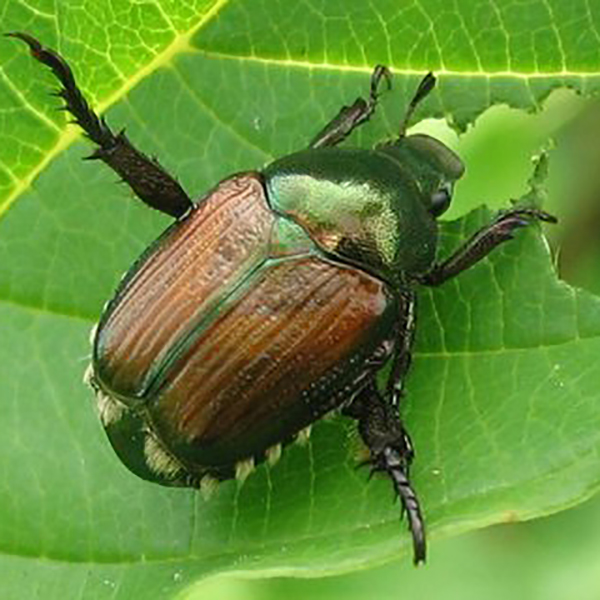By Dirk Coburn, M.C.H.
In much of eastern and central Massachusetts we have grown used to fighting in the spring against tree defoliation by winter moth caterpillar and gypsy moth caterpillar. If a substantially defoliated tree needs leaves, it is likely to push out a new set of leaves. The resource that it most needs in order to do this is water. In most years, two or three very deep waterings at two-week intervals would be appropriate to consider for a defoliated tree.
Groundwater is fairly plentiful this year, so an extraordinary deep watering is probably not necessary this year unless you have a very fast-draining soil.
But the threat of defoliation by pests does not disappear with the summer equinox. Fruit trees can have a particular challenge if they are defoliated by Japanese beetles in July, while they are growing and ripening their fruit. If the tree has a heavy load of fruit it can be helpful anyway, and certainly in the case of significant defoliation, to remove some portion of the fruit now and to let the tree concentrate its resources on fewer fruit. The tree may do some culling for you by letting some fruit drop. If you do some intentional culling, remove the smallest ones and cull evenly from throughout the tree. Reducing the fruit load by anywhere from 1/4 to 2/5 should significantly alter the stress on the tree of fruit production and improve the prospects of a significant harvest in the current year.
In September any tree defoliated during the growing season could benefit from a feeding with a fertilizer with a major nutrient profile of 8-8-8- or 10-10-10.
What should you do in future seasons if your fruit tree is defoliated by Japanese beetles? Any tree that is substantially defoliated prematurely three years in a row is at high risk of mortality. For this reason, you should be prepared the following year to treat your defoliated fruit tree at two-week intervals starting at the very end of June and continuing until Japanese beetles have disappeared from your landscape. A spray based on Spinosad would be appropriate, such as Captain Jack’s Dead Bug Brew by Bonide that we carry. Treat the trees at dusk, just after sunset, when bees and other pollinators are typically not foraging. The spray will dry on the leaves overnight. Its toxicity to insects that do not feed upon the foliage will drop to near zero, but the treatment will remain effective with the Japanese beetles that feed on the foliage. If we get a moderate to heavy rain while the beetles are out, re-treat the tree when the leaves are dry and reset the two-week clock for the next treatment.
An additional or alternative strategy involves planting lower fodder for the beetles. The beetles pupate in the ground and usually start feeding from the ground up. So planting perennials or low shrubs that they feed on can delay their rising to feed on your trees, potentially long enough to result in little or no damage to the trees before the beetles lay their eggs in the ground and die. This strategy has the advantage of being pesticide-free, though not costless. On the downside, this strategy does nothing to control the population of the beetles.








